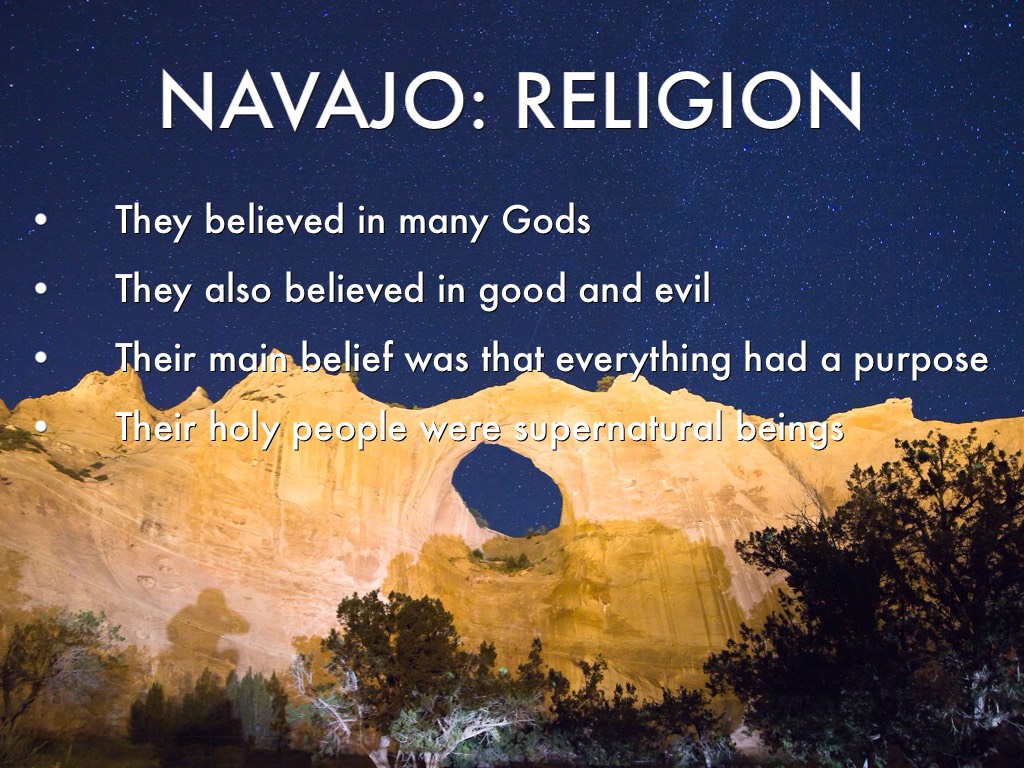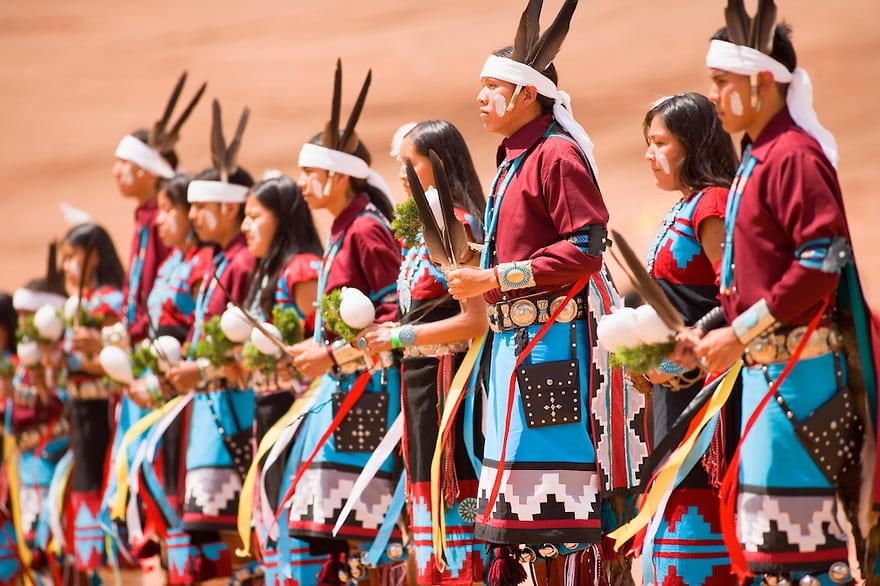
The Enduring Echoes: Christianity’s Profound Impact on Navajo Traditional Beliefs
The spiritual landscape of the Navajo Nation, known to themselves as the Diné, has been irrevocably altered by the persistent introduction of Christianity. Far from a simple adoption of new tenets, this encounter represents a complex and often painful collision of worldviews, leaving an indelible mark on traditional beliefs, practices, and the very fabric of Diné identity. The impact has been multifaceted, ranging from direct suppression and cultural erosion to subtle syncretism and, ultimately, a resilient struggle for cultural preservation.
The systematic dissemination of Christian doctrine among the Diné began in earnest following the "Long Walk" of 1864-1868, a traumatic period of forced removal and incarceration. Returning to a devastated homeland, the Diné were vulnerable to external influences. Missionaries, often working in tandem with the U.S. government’s assimilation policies, established schools and churches, viewing traditional Navajo spirituality as "pagan" and an impediment to "civilization." This period marked the initial, aggressive phase of impact, where Christian tenets were not merely offered but often imposed.
The Clash of Cosmologies: Hózhó vs. Original Sin
At the heart of the conflict lies a fundamental divergence in cosmological understanding. Traditional Diné philosophy is centered on Hózhó, a profound concept encompassing balance, harmony, beauty, and order within the universe. Life’s purpose is to maintain and restore Hózhó, often through intricate ceremonies, prayers, and a respectful relationship with the natural world and the Holy People (Diyin Diné’e). Illness, misfortune, or discord are understood as a disruption of Hózhó, not as a punishment for "sin" in the Christian sense.
Christianity, conversely, introduces a linear worldview dominated by the concepts of original sin, a singular omnipotent God, and the need for salvation through Christ. This narrative inherently clashes with the cyclical, interconnected Diné understanding of existence. The Christian notion of a fall from grace and inherent human depravity stands in stark contrast to the Diné belief in the inherent sacredness of creation and the pursuit of Hózhó. As one elder reportedly observed, "Our ways teach us to live in balance; their ways teach us we are born broken." This theological chasm created an immediate tension, forcing converts to reconcile two vastly different interpretations of good, evil, and the human condition.

Erosion of Language and Ceremony: The Boarding School Legacy
Perhaps the most devastating impact came through the boarding school system, a cornerstone of U.S. government and missionary assimilation efforts from the late 19th through the mid-20th centuries. Children were forcibly removed from their families and communities, often for years, and immersed in an environment designed to "kill the Indian to save the man." Speaking Diné, their native language, was strictly forbidden and often met with harsh physical punishment. This policy was a direct assault on traditional beliefs, as the Diné language is not merely a means of communication but the very vessel through which cultural knowledge, sacred stories, ceremonies, and philosophical concepts like Hózhó are expressed and preserved. The loss of language fluency among generations directly correlated with a diminished understanding and practice of traditional ceremonies and spiritual teachings.
Traditional ceremonies, central to maintaining Hózhó and addressing life’s challenges, were often labeled as witchcraft or devil worship by missionaries. The elaborate chants, sand paintings, and rituals performed by hataałii (medicine people) were actively discouraged, and their practitioners demonized. Children returning from boarding schools, often traumatized and alienated from their cultural roots, struggled to re-engage with these complex practices, leading to a generational gap in knowledge transmission. The number of fluent Diné speakers and practicing hataałii has declined precipitously, a direct consequence of these assimilationist policies. This erosion has left many Diné feeling spiritually unmoored, caught between a fading tradition and a new faith that often struggles to fully address their cultural identity.
Internal Divisions and the Struggle for Identity
The introduction of Christianity also created deep fissures within Diné communities. Families and clans became divided between those who embraced the new faith and those who clung to traditional ways. These divisions persist today, sometimes manifesting in tensions over community leadership, cultural events, or even funeral rites. For many, choosing Christianity was not just a spiritual decision but also an economic and social one, as mission schools offered education, healthcare, and opportunities that were otherwise unavailable. This pragmatic aspect often intertwined with genuine conversion, leading to complex loyalties.
For those who adopted Christianity, the journey was not always straightforward. Many struggled with reconciling their Diné identity with Christian teachings. Questions arose: Could one be a good Christian and still honor the Holy People? Could traditional healing practices coexist with Christian prayer? This internal struggle often led to a unique form of syncretism, where Christian beliefs were subtly adapted to fit a Diné worldview. Some Christian hymns were translated into Diné and sung to traditional melodies; biblical stories were sometimes reinterpreted through a Diné cultural lens. For example, some Navajo Christians might see parallels between the Christian concept of a loving Creator and the Diné creation stories that emphasize the interconnectedness of all life. This adaptation, while demonstrating resilience, also underscores the persistent influence of traditional thought even within new religious frameworks.
Syncretism and the "Navajo Christian" Identity
Despite the historical pressures, the Diné spirit has proven remarkably resilient, often adapting rather than simply succumbing. This adaptability has given rise to a distinct "Navajo Christian" identity, where individuals integrate elements of both faiths. For some, this means attending Christian church services on Sunday while also participating in traditional ceremonies like the Blessingway (Hózhóójí) for healing or good fortune. Prayers might incorporate both Christian invocations and traditional Diné spiritual concepts.
However, this syncretism is not without its challenges. Mainstream Christian denominations often view the continued practice of traditional ceremonies as idolatry or incompatible with true faith, creating a persistent tension for those attempting to walk both paths. Yet, for many Diné, this blended identity is a way to honor their heritage while embracing a faith that provides comfort and community. Dr. Irvin Morris, a Diné scholar and author, has often spoken about the ongoing dialogue within the Navajo psyche, reflecting on how individuals navigate this dual heritage to forge a unique sense of self. This reflects a deeper truth: culture is dynamic, and the Diné have always been adept at incorporating new elements while retaining their core identity.

The Ongoing Struggle for Cultural Revitalization
In contemporary times, the impact of Christianity continues to shape the spiritual landscape of the Navajo Nation. While a significant portion of the population identifies as Christian, there is a growing movement to revitalize traditional Diné beliefs and practices. Language immersion programs, cultural centers, and efforts to train new hataałii are all testaments to a conscious effort to reclaim what was lost or suppressed. Elders and cultural practitioners are actively working to pass down knowledge to younger generations, recognizing the critical importance of these traditions for collective identity and well-being.
The legacy of Christian influence, however, remains a complex tapestry. It has brought new forms of community, education, and spiritual solace to many. Yet, it has also contributed to the fragmentation of traditional knowledge, the erosion of language, and a profound sense of cultural loss for others. The ongoing challenge for the Diné is to navigate this dual heritage, to heal historical wounds, and to find a path forward that honors both their ancient traditions and the diverse spiritual paths their people now walk. The impact of Christianity on Navajo traditional beliefs is not a closed chapter but an ongoing narrative of adaptation, resistance, and the enduring quest for Hózhó in a changing world.


